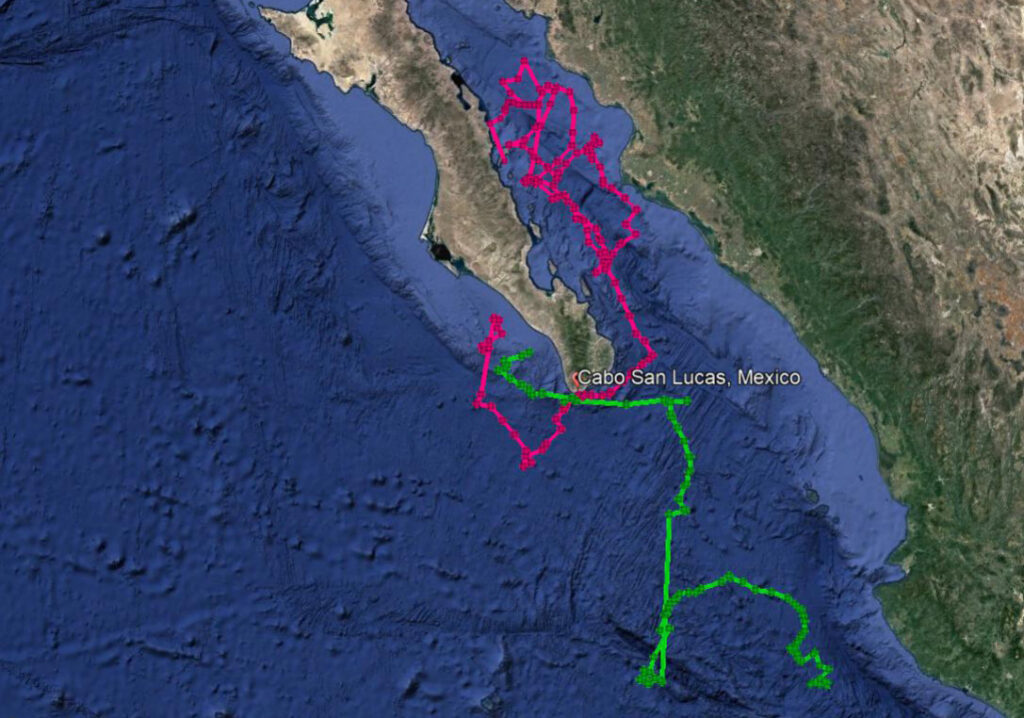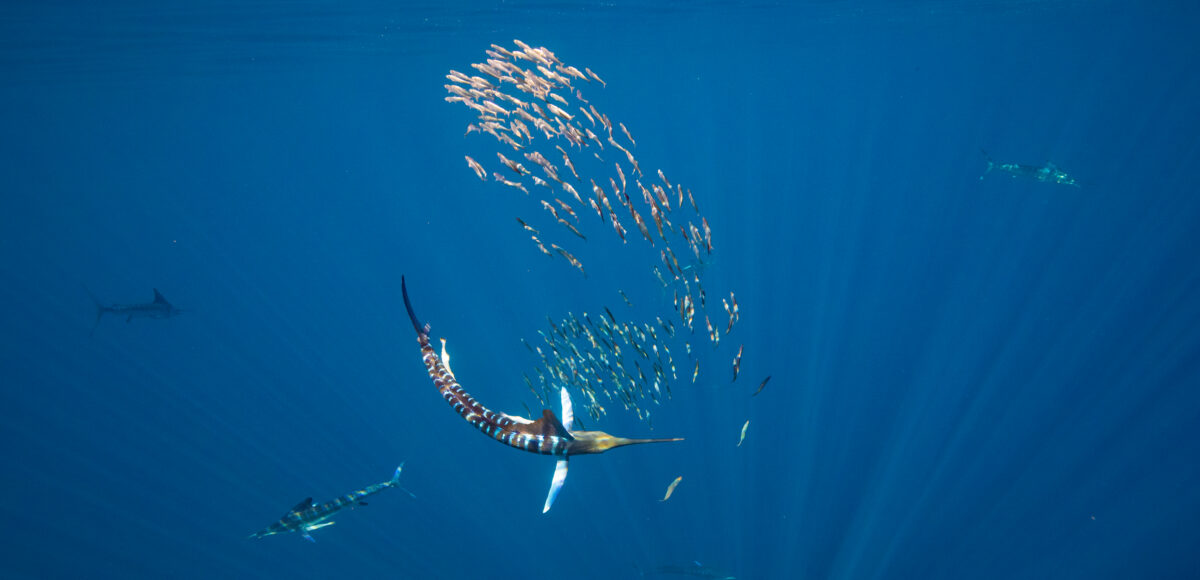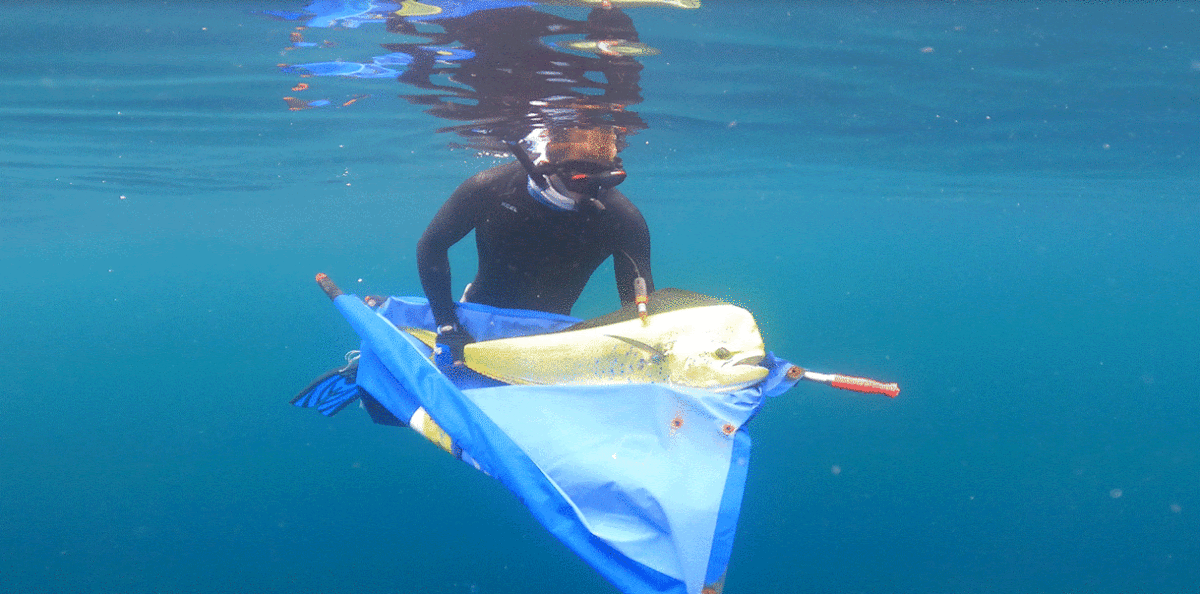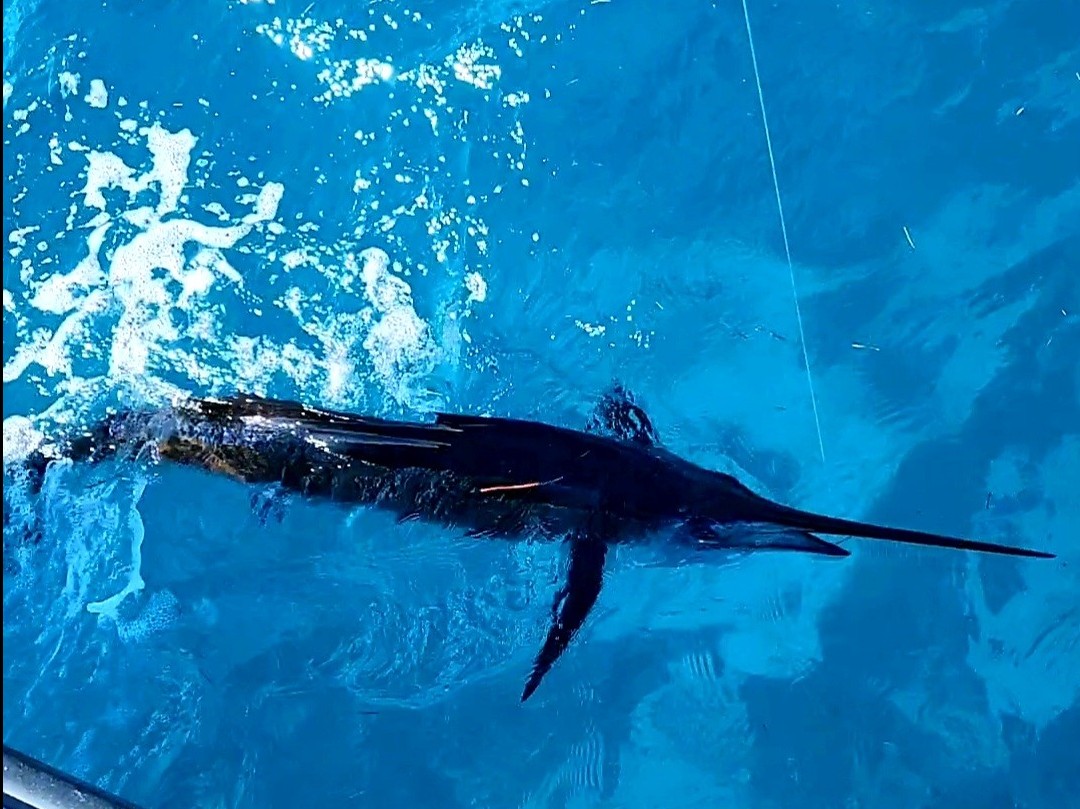The history of rod and reel sportfishing began 123 years ago in the waters surrounding Santa Catalina Island on the West Coast of the United States. It was June 1, 1898, when Dr. Charles Frederick Holder succeeded in capturing a 183-pound bluefin tuna on linen line — the first such catch on rod and reel anywhere in the world. The first striped marlin wasn’t caught on rod and reel until Capt. Harry Willey of Hollywood, California, landed his fish August 25, 1903.
However, according to Willey, “The Tuna Club of Santa Catalina refused to weigh and record my striped marlin because I was a professional boatman, not an amateur angler!” The striped marlin season along the California coast begins when the first fish is either reported released by one of the numerous sportfishing clubs established over the years or weighed in at one of the many certified scales from San Diego to Santa Barbara.
El Niño and Striped Marlin
Traditionally, striped marlin are the most celebrated sportfish in SoCal, but there have been sporadic blue and black marlin sightings throughout the decades leading up to 2015 when an unusual spike in the sea temperature attributed to an El Niño event resulted in double-digit catches of black and blue marlin, as well as dorado, wahoo and yellowfin tuna from the Channel Islands to well below the Mexican border. Accompanied by low pressure in the eastern Pacific, El Niño conditions enabled bands of warmer water to push into the central and east Pacific, which were responsible for some of the best fishing California anglers had seen in decades.
Steve Crooke, Scientific Advisor for the Sportfishing Association of California (SAC), who previously worked for the California Department of Fish and Game for 38 years confided, “The sea temps and the sea color are two of the prime indicators for sportfishing along California and Baja.” In addition to sea surface temperature and chlorophyll charts, a valuable resource for up-to-date information is John Doughty’s Big Game Tackle on Balboa Island. JD offers a wealth of information on his blog compiled from clients visiting his small tackle shop, telephone calls and daily VHF radio reports.

Bill Gray: An Example
From Balboa to Baja
On September 30, 2016, Capt. Geoff Hersch tagged a striped marlin (16P1157) off Balboa that was the first entry in the 2016-2017 IGFA Great Marlin Race. After swimming away with a pop-up satellite tag (PSAT) in its shoulder, the 80-pound fish began a southerly track toward the tip of the Baja peninsula. It worked the area in a circular feeding pattern for another month before heading south to three degrees north of the equator, then traveling northwest until the tag popped off after 216 days at large. When the data came back, it was revealed that the fish preferred to swim above the 59-degree thermocline, but on its deepest dive to 1,128 feet it reached a temperature of 49 degrees. The nomadic fish spanned a total distance of approximately 5,560 nm.
It was November 4, 2016, when the second tag of the race was deployed for the Tuna Club of Avalon (16P1159). This fish was estimated at 225 pounds and followed a similar path, moving south along the coast to the tip of the Baja peninsula, then deviating on a northwest course. The PSAT eventually popped off just north of the initial tagging location in California. During the same year, Pisces Sport Fishing organized a trip with Gray Fishtag Research aboard the Tag Team, a 61-foot Viking out of Cabo San Lucas.
Bill Gray and Tracy
On the group’s first outing, they had two PSAT tags to deploy and within minutes of arriving at the world-famous Finger Bank the team tagged and released a fish they named Bill Gray, in honor of the founder of Gray Taxidermy. A second fish named Tracy, with estimated 79-inch lower jaw fork length, was also tagged with a Wildlife Computers Inc. PSAT. The two striped marlin were released on the same day in the same area, but each took to a different direction. Bill Gray made a track around Cabo San Lucas and into the Sea of Cortez, where it headed north until it was caught and harvested near Isla Carmen after 68 days at large. Tracy headed on a southeasterly track from Finger Bank, coming to within five and a half miles of Los Cabos, then traveling over the Mazatlán Basin and the Rivera fracture zone off mainland Mexico.
California’s Bounty
During 2019, California’s offshore sportfishing fleet faced a unique, yet enviable dilemma. There were acres of huge bluefin tuna in the southern sector, a flourishing deep-drop rod and reel swordfishery yielding extraordinary results in the central sector, and in the northern sector at the Channel Islands, the striped marlin had settled in. By fall, it was clear that the bluefin and swordfish numbers were dominating the catches, while striped marlin reports were down. Were there fewer numbers of striped marlin? Perhaps the volume and size of the bluefin and swordfish were a distraction that could not be ignored.
By October, as sea temps begin to fall, winter conditions slowly move in off the California coast and many larger boats follow coastal currents as the warmer water recedes south. The sea life continues its journey along the coast to Magdalena Bay, a plankton-rich environment that attracts sardine, shrimp and other baitfish, which in turn entice a diversity of sea life. Confirming the volume and health of the west coast striped marlin fishery in 2019, Anthony Hsieh, the owner of the Bad Company fleet, took his 144-foot Trinity and 92-foot Jones Goodell to Magdalena Bay in early November.
There were 14 anglers aboard the two vessels, which included 10 West Coast high-liners, two experienced East Coast anglers and two veteran soldiers who loved to fish. The goal was to set a record for the most striped marlin released in a single day. The results were extraordinary, and day one produced a staggering 330 releases!
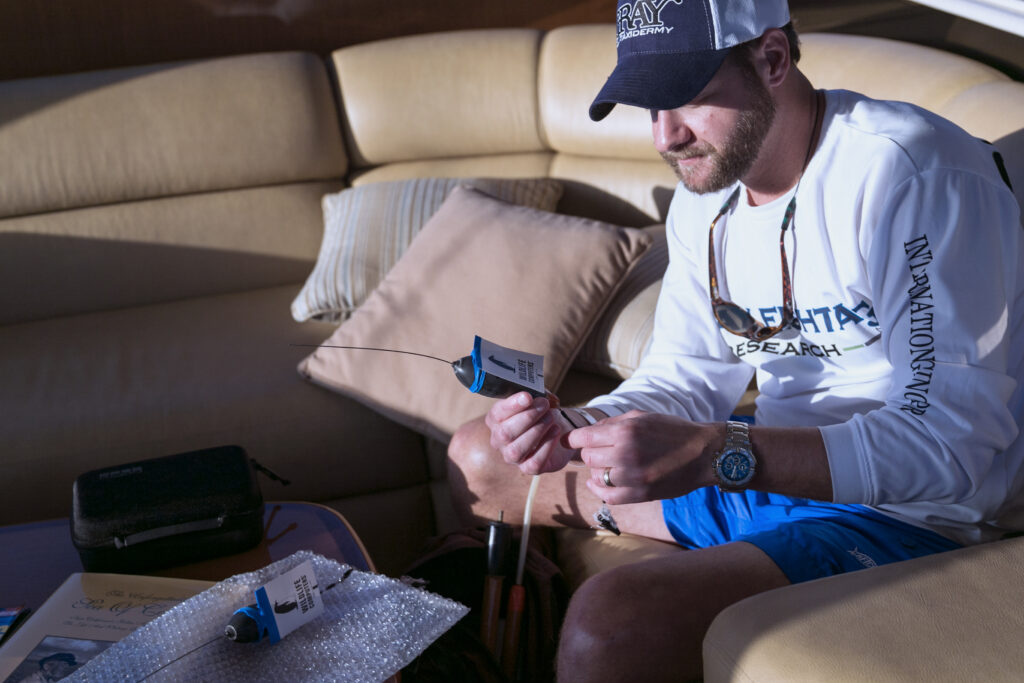
Heading South
In 2020, the first notable game fish caught in local waters was a bluefin tuna. Like the preceding year, the bluefin dominated the local sportfishing scene early, followed by striped marlin and then swordfish. The 39th Annual Master Anglers Billfish Tournament, presented by the Balboa Angling Club, was held on September 11-12, 2020, comprising 41 boats and 172 anglers. According to the Club Secretary, Mindy Martin, the results were disappointing. The fleet only managed 21 releases during the two-day event, reflecting the lack of striped marlin in SoCal waters. But daily fishing reports from the boats heading south were appealing — tuna, dorado and marlin were seen above Cedros Island and scores of tailers were on the Ranger Bank. Below Turtle Bay there were stripers galore, wahoo were on the Ridge, and more marlin and wahoo were off Mag Bay proper.
Many of the locals had initiated their southward migration, and Capt. Peter Groesbeck of Total Chaos reported, “Great trip going down. Caught blue marlin just south of Turtle Bay. Striped marlin out in front of Mag and at the Potato Bank. October 17, 2020.” It was great fishing at Magdalena Bay, and the season lasted into February 2021, which is uncommon. “There were quite a few more boats from Costa Rica in the mix this year, which helps to keep everyone on the bite. I remember five or ten years ago, you didn’t have the spread of boats that are fishing Magdalena Bay now. It was much harder to keep the fish located in between trips,” says Capt. Ty Valli of Chupacabra.
Tracking With Tags
In 2020, six PSAT tags were deployed off the Baja/Magdalena Bay area. “It will be interesting to see where the striped marlin that were tagged above Cedros and in the Mag Bay area end up,” JD observed. “Will they turn? Or continue down the west coast and swim back up into the Sea of Cortez like the marlin Bill Gray did? Or will some, like the fish named Tracy, continue south toward mainland Mexico?”
These tags were programmed to collect and archive data for 240 days, so they should be surfacing soon. The Southern California coast from the Channel Islands to the Mexican Border and beyond enjoys a rich sportfishing history not duplicated anywhere in the world. Few, if any fisheries have as much recorded statistical data on striped marlin beginning with the first one caught in 1905, yet incongruities between genetic studies and satellite data still have us all confused as to the extent of population mixing and subdivision. “The status of the western and central Pacific striped marlin stock indicates that the species is not in a good place right now. Currently, the spawning-stock biomass is below what would produce maximum sustainable yield,” says Jason Schratwieser, President of the IGFA.
The Latest Findings
While continued tagging efforts have uncovered heaps of new data, PSAT findings have demonstrated that marlin caught in California typically migrate south to Mexico as the water temperature cools before heading offshore into the Pacific. With scientific analysis indicating there are four stocks of genetically distinct striped marlin in the Pacific Ocean, and California’s striped marlin belonging to the Japan-Hawaii stock, not the Mexico-Central America stock, this movement pattern reflects a high degree of connectivity and one that might not bode well for SoCal anglers. This confounds marine scientists and anglers alike, who persist in attempting to determine a predictable pattern of what to expect each season in each area.
However, as we uncover more about the world’s most widely distributed billfish species, it’s a good bet that between Southern California, Magdalena Bay, Cabo San Lucas, or even up into the Sea of Cortez, one or more of these areas will deliver a striped marlin season to remember.
